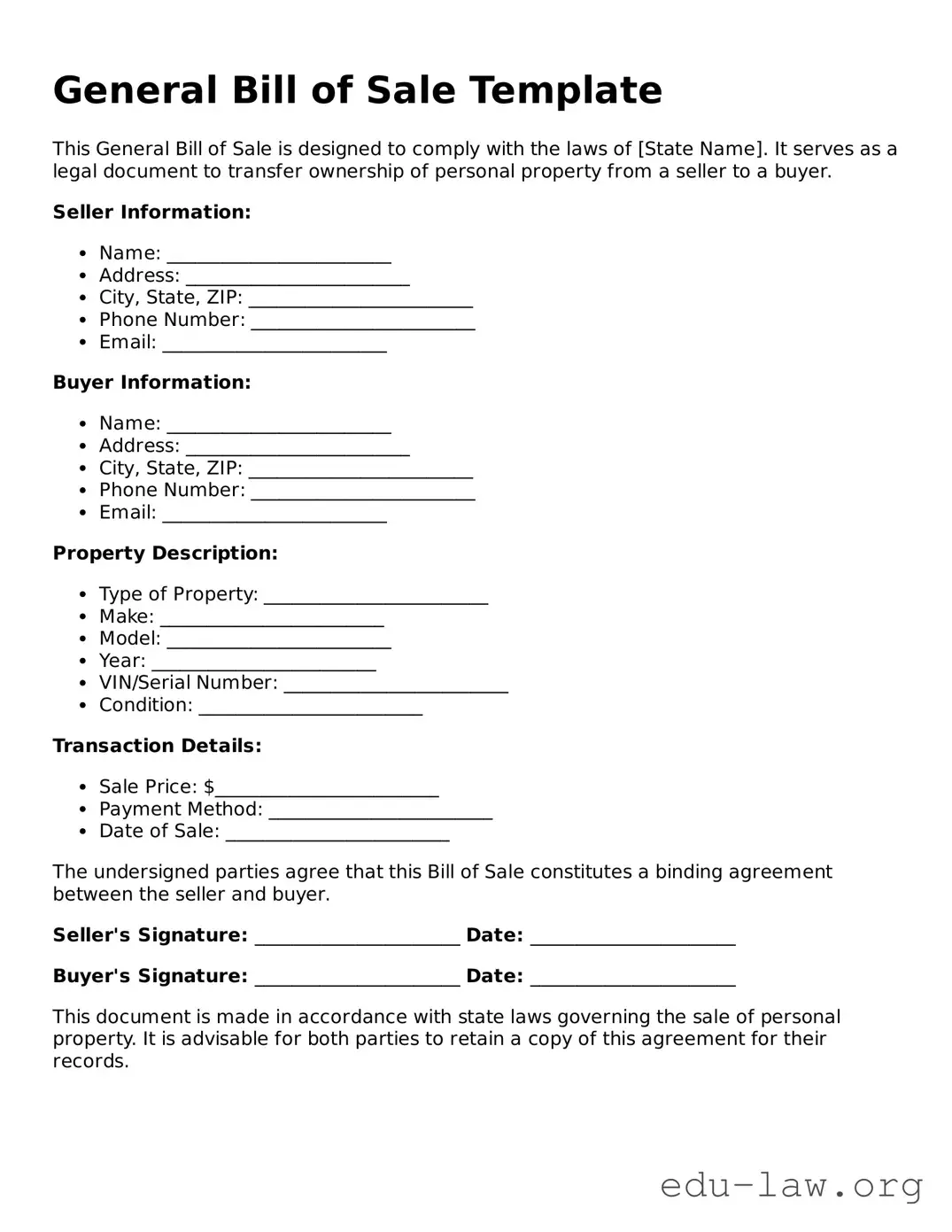1. The Vehicle Bill of Sale serves a similar purpose as the General Bill of Sale, specifically for motor vehicles. It provides a detailed account of the transaction between the seller and the buyer. This document typically includes information about the vehicle, such as the make, model, year, and vehicle identification number (VIN). Both forms act as evidence of ownership transfer, but the Vehicle Bill of Sale is tailored to comply with specific state regulations related to vehicle sales.
2. A Personal Property Bill of Sale covers the sale of personal items, such as furniture, electronics, or collectibles. This document outlines the details of the transaction, including a description of the items sold and the sale price. Like the General Bill of Sale, it protects the interests of both the buyer and the seller, ensuring that ownership is clearly established and any agreed-upon conditions are documented.
3. The Real Estate Purchase Agreement functions similarly, but it is specifically for the sale of real property. This document lays out the terms of the sale, including property details, the agreed sale price, and contingencies like inspections or financing. While a General Bill of Sale covers personal property, the Real Estate Purchase Agreement is more complex and subject to different regulations and legal requirements.
4. A Notarized Bill of Sale adds a layer of validation to the transaction. In this case, a notary public witnesses the signing of the bill of sale, which can enhance its legality and credibility. Both documents serve the function of transferring ownership, but the notarized version may be more compelling in legal scenarios, as it provides an additional certification of legitimacy.
5. A Cash Sale Agreement is a straightforward document used when the buyer pays for an item in cash. This type of agreement typically outlines the item sold, the amount paid, and any relevant conditions. While the General Bill of Sale covers a broader spectrum, the Cash Sale Agreement is more specific to cash transactions, offering clear evidence of the sale.
6. The Equipment Bill of Sale is similar in that it deals with the sale of equipment, often used in business settings. This document details the equipment being sold, including serial numbers or model information, and states the purchase price. Both forms serve to confirm the transfer of ownership but cater to different types of assets.
7. A Business Asset Bill of Sale is intended for transactions involving business-related items and properties. This can include furniture, machinery, or proprietary assets. Like the General Bill of Sale, it establishes ownership transfer, but it often includes specific details relevant to business operations, which can be critical for tax or legal purposes.
8. The Sale and Purchase Agreement is a comprehensive document that goes beyond the scope of a General Bill of Sale. It can involve various assets, including goods or services, and outlines terms like payment and delivery dates. While both documents serve to record the sale, the Sale and Purchase Agreement provides a more detailed legal framework for the transaction.
9. Finally, an Inventory Bill of Sale is used in situations where goods are sold in bulk, such as business liquidations or auctions. It provides a list of all items and their conditions, creating a comprehensive record of the sale. Both this document and the General Bill of Sale facilitate ownership transfer; however, the Inventory Bill of Sale focuses specifically on the sale of multiple items at once.
